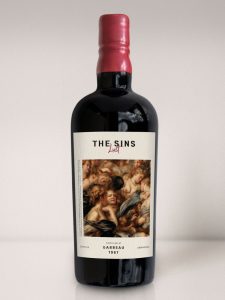If you’re passionate about whisky, you owe it to yourself to explore armagnac. Unlike whisky, armagnac’ lacks globally recognized giants, with fewer well-known houses.
Yet, this craft spirit holds an untold story waiting to be discovered. For those who seek liquid treasures, the rich history and value of armagnac are truly remarkable. From its captivating aroma to its age and character, armagnac offers everything cherished by whisky aficionados.
What is Armagnac?


Armagnac is a distinguished spirit hailing from the Gascony region in Southwest France, renowned for its rich history and exquisite flavors. Distinct from its counterparts, it boasts complex aromas and a lingering finish cherished by aficionados. Its origins trace back to Roman times, with the region’s heritage deeply rooted in its agricultural prowess. Today, armagnac remains a symbol of artisanal craftsmanship, with small-scale producers upholding its esteemed tradition. At Distilia offer a curated selection for discerning collectors this rare spirits. We’re dedicated to amplifying the voices of independent artisans, ensuring the spirit’s legacy endures amidst a sea of commercial offerings.
How did Armagnac get its name?
Armagnac’s history traces back to Roman times when tribes in the region were conquered. A soldier named Hermann was rewarded with land, later named Hermanius, which evolved into armagnac.
History of Armagnac
History of armagnac traces back to Roman times. Throughout its rich history, armagnac endured various invasions and flourished under notable figures like King Henry IV and D’Artagnan.
Promotion of religious tolerance by King Henry IV and the bravery of D’Artagnan, the famous musketeer, had a significant impact on the Armagnac region. Their actions fostered an environment of stability and valor, inspiring generations of Armagnacais to uphold principles of bravery and patriotism. Their enduring legacy continues to shape the spirit and character of the armagnac community, contributing to its rich history and cultural significance.
Despite facing challenges such as competition from Cognac and setbacks like the phylloxera epidemic, armagnac persevered, with innovations like the establishment of the BNIA ensuring its quality and resurgence in the market.


What is Armagnac made of?
Armagnac’s unique character stems from its diverse grape varieties, unlike Cognac dominated by Ugni Blanc. Historically, Folle Blanche was prominent until the phylloxera outbreak, replaced by hardier varieties like Ugni Blanc, Colombard, and Baco, a hybrid of Folle Blanche and Noah. Ugni Blanc now leads in popularity due to its versatility.
Grapes are harvested together but can be processed separately by some producers. Only a portion of the yield is distilled. The acidic, low-alcohol wines are ideal for continuous distillation, producing a wide range of flavors.
Currently, ten grape varieties are permitted for armagnac production, with Ugni Blanc and Baco being the most common.
Armagnac Region
The Armagnac region, nestled in Gascony, France, is renowned for its gastronomic delights, including goose, duck, and of course, armagnac. Governed by strict appellation regulations, it comprises Bas-Armagnac, Armagnac-Ténarèze, and Haut-Armagnac. The region’s diverse soils, ranging from sandy to clay-limestone, and temperate climate create ideal conditions for grape cultivation. Bas-Armagnac yields light, fruity spirits, while Armagnac-Ténarèze produces full-bodied, powerful eaux-de-vie capable of aging for decades. Haut-Armagnac, with its limestone soils, crafts fresh, fruity aromas. The Armagnac region’s history dates back to Roman times, evolving over centuries into the world’s oldest distilled spirit. Today, it remains steeped in tradition, regulated by the Bureau National Interprofessionnel de l’Armagnac to uphold its unparalleled quality and distinct terroir.

Armagnac vs. Cognac
Armagnac and cognac share similarities as French brandies made from grapes and aged in oak barrels. Yet, they differ notably. Armagnac is from white grapes, while cognac uses white and black grapes. Originally armagnac ages in various oak barrels, unlike cognac which sticks to Limousin and Tronçais oak. Armagnac undergoes single distillation, unlike cognac’s double process. Bas-Armagnac, rich in sandy soil, contrasts with cognac’s Bons Bois. Both have unique flavors, with armagnac often richer and more rustic, while cognac is lighter and floral. Recognizing these distinctions allows enthusiasts to appreciate each spirit on its own merit.
Production proces
Armagnac production, steeped in tradition, starts with grape harvest and fermentation. The resulting white wine is carefully blended for eau-de-vie profiles. Distillation in pot stills refines the spirit, discarding impurities. The first distillation yields brouillis, further distilled to 67°-72° alcohol. Aging in oak barrels imparts color and flavor. Finally, the matured armagnac is bottled, reflecting centuries of craftsmanship, rich history, and complex character.
Armagnacs in our shop


Armagnac bottles vary in shape and age, making them unique. Pay attention to age designations like VS, VSOP, and XO, indicating the minimum age of the spirit in the bottle. Older vintages, such as Hors d’Age or XO, offer deeper flavor profiles and aromas.
Armagnac vintage is a choice for true connoisseurs. Each vintage represents a unique blend of climate, soil, and winemaking techniques of a particular year. High product quality is guaranteed by rigorous production standards.
In our store, you’ll also learn Blanche Armagnac AOC, a modern addition to the traditional lineup. It’s a clear distillate with fresh and fruity aromas, perfect for those seeking new experiences.
Don’t wait any longer, add a bottle of exceptional armagnac from our online store to your collection today!


Comments are closed.